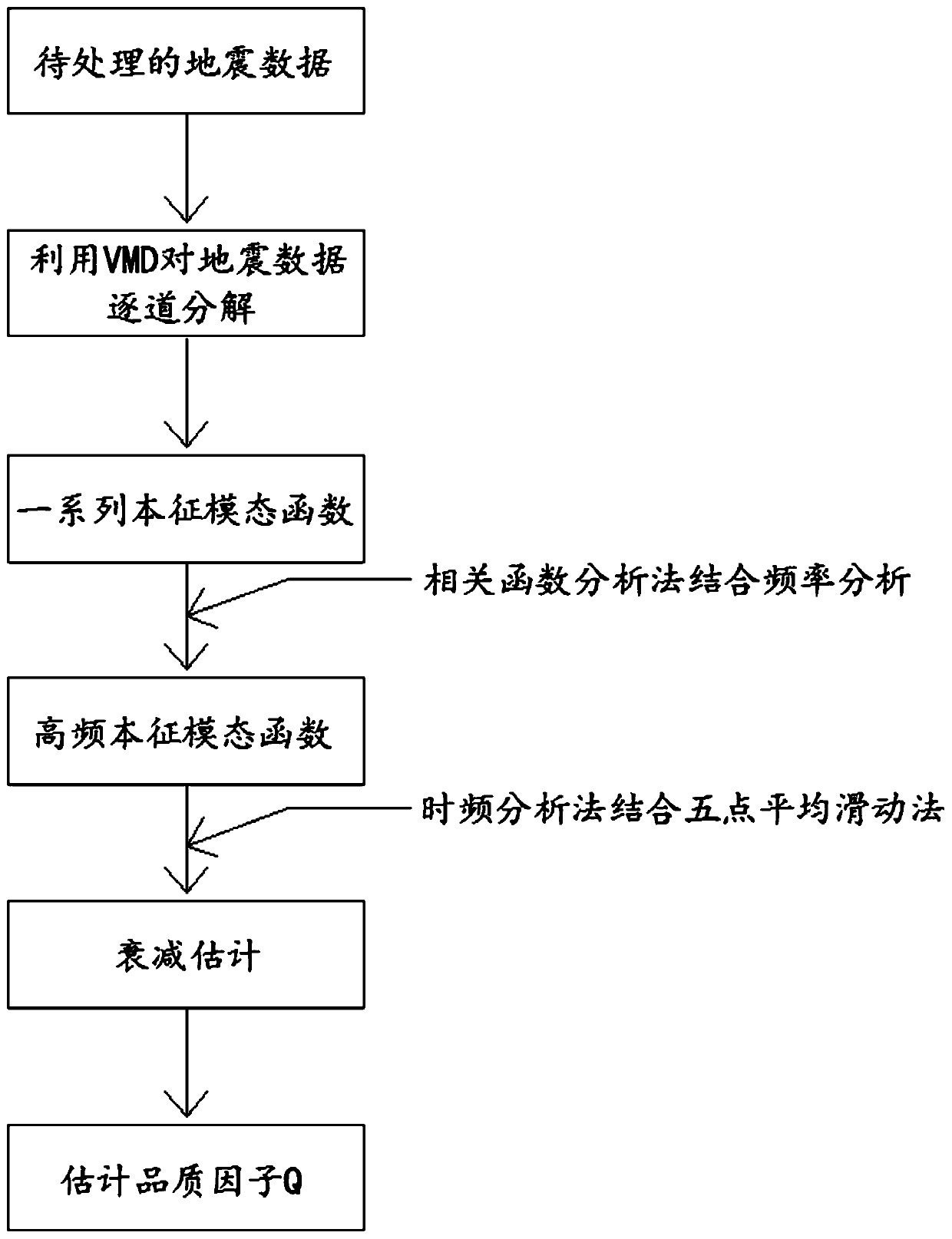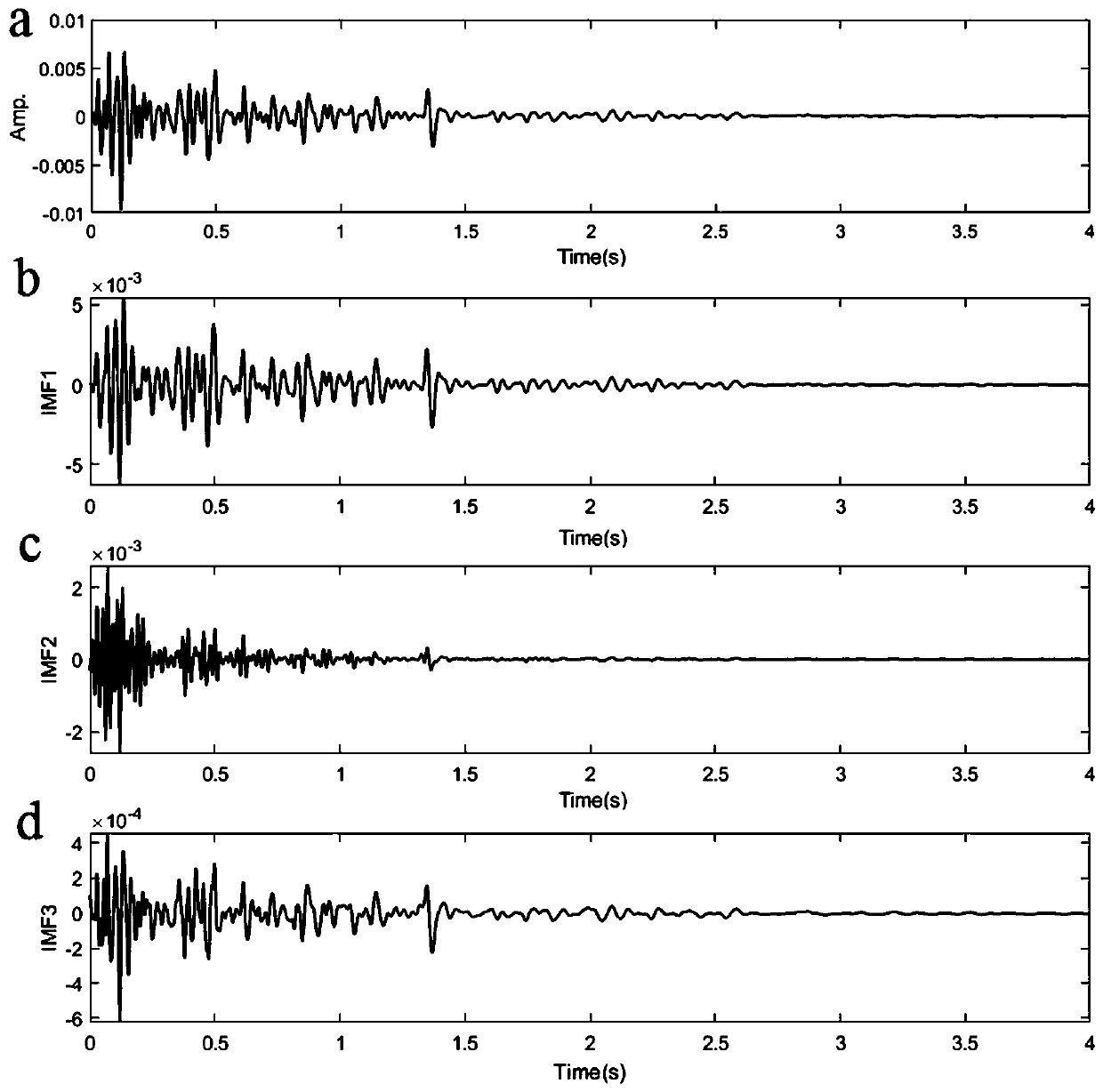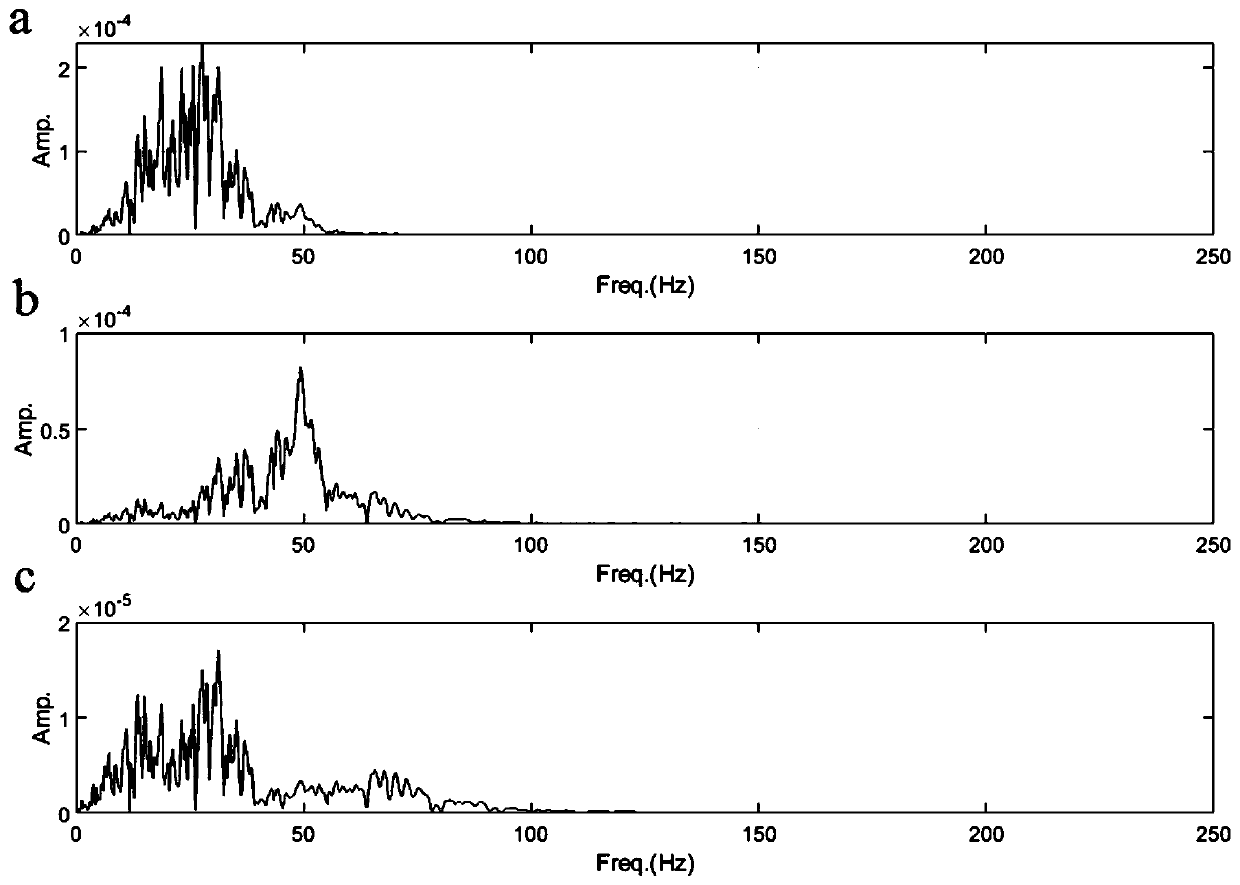Stable seismic quality factor Q estimation method based on variational mode decomposition
A variational modal decomposition and quality factor technology, which is applied in the field of geophysical processing of oil and gas exploration, can solve the problems of low estimation accuracy of quality factor Q, low stability, and no consideration of different attenuation of seismic signals. The effect of long propagation time, high time-frequency resolution and energy concentration, improving estimation accuracy and stability
- Summary
- Abstract
- Description
- Claims
- Application Information
AI Technical Summary
Problems solved by technology
Method used
Image
Examples
Embodiment 1
[0065] refer to figure 1 , a stable seismic quality factor Q estimation method based on variational mode decomposition, the steps are as follows,
[0066] (1) Comprehensively utilize logging, synthetic seismic records and geological information to accurately calibrate the seismic trace target layer, and determine the analysis time range of seismic data;
[0067] (2) Within the analysis time range of seismic data, the seismic data in step (1) is decomposed into a series of eigenmode functions track by track by using variational mode decomposition;
[0068] (3) Using the correlation function analysis method combined with the frequency analysis, the high-frequency eigenmode function is selected from a series of eigenmode functions;
[0069] (4) For the optimized high-frequency eigenmode function, use the time-frequency analysis method based on variational mode decomposition combined with the five-point average sliding method to optimize the logarithm for estimating the attenuati...
Embodiment 2
[0106] refer to figure 2 , the seismic data used to calculate the formation quality factor and its intrinsic mode function generated by variational mode decomposition, the first intrinsic function IFM1 and the second intrinsic mode function generated by variational mode decomposition IFM2 and the third eigenfunction IFM3, respectively, as figure 2 As shown in (b), (c) and (d), (a) is a synthetic seismic record generated using the minimum phase wavelet. The synthetic record does not contain noise, the theoretical quality factor Q is 50, and the sampling frequency is 500HZ.
Embodiment 3
[0108] The correlation between each eigenfunction and the original seismic synthetic record is known from Table 1. The first IMF1 and the second IMF2 meet the condition that the correlation coefficient is greater than 0.3.
[0109]Table 1 Correlation between each eigenfunction and the original synthetic seismic record
[0110]
PUM
 Login to View More
Login to View More Abstract
Description
Claims
Application Information
 Login to View More
Login to View More - R&D
- Intellectual Property
- Life Sciences
- Materials
- Tech Scout
- Unparalleled Data Quality
- Higher Quality Content
- 60% Fewer Hallucinations
Browse by: Latest US Patents, China's latest patents, Technical Efficacy Thesaurus, Application Domain, Technology Topic, Popular Technical Reports.
© 2025 PatSnap. All rights reserved.Legal|Privacy policy|Modern Slavery Act Transparency Statement|Sitemap|About US| Contact US: help@patsnap.com



